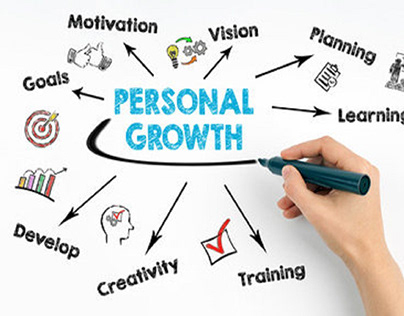Small changes can lead to big results. When people make tiny shifts in their habits and mindset, they often see massive transformations in their lives. The key to lasting change is focusing on manageable, consistent adjustments rather than huge, overwhelming efforts.
These small shifts can touch many parts of life, from how someone talks to themselves to the way they organize their day. By making these tiny changes, people create momentum that builds over time and leads to significant progress.
Understanding which small shifts matter most helps avoid wasted effort. With clear focus and steady practice, anyone can experience powerful transformation without drastic upheaval.
Key Takeways
- Small, consistent changes lead to lasting improvements.
- Mindset and environment play a big role in transformation.
- Tracking progress through small wins helps maintain focus and motivation.
Understanding Tiny Shifts
Small changes in behavior or thought can pile up and have a big effect over time. These minor adjustments work through natural habits and brain reactions that make lasting growth possible.
The Science Behind Micro-Changes
The brain is wired to respond to small, consistent actions. When a person repeats a new behavior, their brain forms pathways that make it easier to keep doing that action. This process is called neuroplasticity.
Because tiny shifts require less effort, they are easier to stick with. Over time, these small habits become automatic, reducing mental strain.
Research shows that micro-changes can build momentum. Even a 1% daily improvement adds up, creating noticeable progress without feeling overwhelming.
Why Small Habits Drive Massive Results

Big goals often fail because they seem too hard. Small habits avoid this by focusing on manageable steps. These simple actions build confidence and reduce resistance.
People are more likely to keep doing a habit if it fits easily into their daily routine. Tiny shifts create a foundation that supports bigger changes later.
Here are three reasons small habits matter:
- They prevent burnout.
- They improve consistency.
- They create long-term behavior change.
This explains why small habits can lead to major improvements in health, work, and personal life.
Identifying Areas for Transformation
Knowing where to focus efforts helps make small changes more effective. Pinpointing which parts of life matter most and which actions yield the biggest results makes transformation clearer and more manageable.
Evaluating Key Life Domains
He or she should start by reviewing important areas like health, work, relationships, and personal growth. Evaluating satisfaction and challenges in each domain reveals where improvement is needed most.
A simple way is to rate each area from 1 to 10 based on current happiness and progress. Low scores highlight where tiny shifts can make a difference.
He or she can also consider which areas affect others. For example, improving health often boosts energy for work and relationships. Focusing on such domains helps create a ripple effect across life.
Spotting High-Leverage Changes
Some changes create bigger impacts than others. He or she should look for habits or routines that, when adjusted, save time, reduce stress, or increase motivation.
Examples include drinking water first thing in the morning or setting a 5-minute daily planning habit. These actions seem small but improve energy and focus throughout the day.
Creating a list of possible changes and rating them by ease and impact helps. High-impact, low-effort actions should be prioritized to maximize benefits with minimal effort.
Mindset Shifts for Lasting Impact
Changing the way a person thinks can lead to meaningful results. Small but focused changes in thinking habits help people move past obstacles and stay motivated over time.
Cultivating a Growth Mindset
A growth mindset means believing that skills and intelligence can improve through effort. People with this view see challenges as chances to learn instead of as threats.
To develop this mindset, one must focus on the process of learning, not just final results. Praise should highlight effort, strategies, and progress, rather than innate talent. This encourages trying harder and not giving up quickly.
When setbacks happen, those with a growth mindset ask, “What can I do differently next time?” This self-reflection opens the door to improvement and resilience.
Overcoming Limiting Beliefs
Limiting beliefs are thoughts that block potential, like “I’m not good enough” or “I can’t change.” These beliefs keep a person stuck and stop growth.
To overcome them, people should identify these negative thoughts as soon as they arise. Writing them down helps make them clear and easier to challenge.
Replacing limiting beliefs with positive, realistic affirmations is key. Instead of “I can’t,” one might say “I am learning to” or “I will improve with practice.” This shifts focus toward possibility and action.
Embracing Incremental Progress
Big changes often start with small steps. Focusing on tiny, consistent actions helps people build momentum without feeling overwhelmed.
Tracking progress daily or weekly can highlight growth and keep motivation high. Simple goals like adding five minutes of exercise or reading one page a day add up over time.
This approach reduces the fear of failure because each small win feels achievable. It also helps build habits that last because change feels manageable and steady.
The Power of Consistent Actions
Small, steady changes matter. Doing simple tasks regularly builds habits that lead to big results. Tracking these efforts and having others to check in with can make consistency easier and more effective.
Building Daily Routines
Daily routines create a structure that makes consistent action easier. When a task becomes a regular part of the day, it requires less willpower to complete.
To build a routine, start with one clear, simple habit. For example, writing for five minutes every morning. Over time, this habit can grow naturally without feeling overwhelming.
Consistency is the goal, not perfection. Missing a day is normal, but getting back on track quickly matters most.
Tracking Progress Over Time
Keeping track of progress shows how small actions add up. It helps identify patterns and boosts motivation by making results visible.
People can use journals, apps, or simple checklists. Recording daily or weekly accomplishments makes the change real.
If progress stalls, tracking makes it easier to adjust actions or goals. It also keeps focus on long-term growth instead of instant results.
Leveraging Accountability
Having someone to report to increases follow-through. Accountability can come from friends, coaches, or groups.
Sharing goals with others creates external pressure to stay consistent. It can involve regular check-ins, reminders, or sharing progress updates.
Accountability partners also offer support and encouragement during setbacks. This helps maintain motivation and focus over time.
Shift #1: Reframing Your Self-Talk
Self-talk is the way people talk to themselves inside their minds. It affects how they feel and act every day. Reframing self-talk means changing negative or unhelpful thoughts into positive or useful ones.
For example, instead of thinking “I can’t do this,” a person can say “I will try my best and learn.” This small change helps build confidence and reduce stress.
Here are common negative phrases and their positive reframes:
| Negative Self-Talk | Positive Reframe |
|---|---|
| I’m not good enough. | I am improving every day. |
| I always fail. | Sometimes I fail, but I also succeed. |
| This is too hard. | This is a challenge I can face. |
People who practice reframing often notice they feel calmer and more motivated. It does not mean ignoring problems but seeing them in a clearer, kinder way.
They can start by catching negative thoughts as they appear.
Then, they ask if those thoughts are true or helpful.
Finally, they replace them with better, realistic ideas.
This shift takes practice but can change how people handle life’s challenges. Reframing self-talk is a simple step that can lead to bigger changes over time.
Shift #2: Optimizing Your Environment
People often overlook how much their environment affects their habits and mindset. Making small changes to the space around them can make a big difference in focus and productivity.
First, they should remove distractions that slow them down. This might mean clearing clutter from a desk or turning off notifications on their phone.
Next, creating a dedicated space for specific tasks helps the brain associate that area with work or relaxation. For example:
| Space Purpose | Suggested Setup |
|---|---|
| Work | Clean desk, good lighting, minimal distractions |
| Relaxation | Comfortable chair, soft lighting, calming decor |
| Exercise | Open space, easy access to gear |
Good lighting also matters. Natural light can improve mood and energy. If that’s not possible, a bright, cool-toned lamp is a good substitute.
Finally, organizing items to be easily accessible saves time and reduces stress. People can group related items together, so they don’t waste effort searching for what they need.
Shift #3: Prioritizing Micro-Wins
They focus on small achievements that happen every day. These micro-wins build confidence and keep motivation high. Even tiny progress can feel like a success.
Micro-wins help break down large goals into clear, manageable steps. This approach reduces overwhelming feelings. People can see their effort lead to results without waiting for big milestones.
Examples of Micro-Wins:
- Completing a short task early
- Learning one new fact
- Cleaning a small area
- Sending a quick email
Tracking micro-wins creates a positive habit loop. When they notice these small wins, they repeat good actions. This builds momentum for bigger changes later.
People who prioritize micro-wins often feel more in control. Instead of focusing on what is not done, they celebrate what is achieved. This shift in mindset supports steady progress.
They avoid burnout by valuing small successes. It encourages persistence and reduces frustration during tough moments. Prioritizing micro-wins keeps progress visible and consistent.
Shift #4: Managing Energy, Not Time
Managing energy focuses on when and how someone works best, rather than just counting hours. It means using energy wisely by building habits that help refresh the mind and knowing the best times for work.
Building Restorative Habits
Restorative habits help recharge energy throughout the day. These can include short breaks, deep breathing, or quick walks. Taking 5–10 minutes away from work tasks helps reduce stress and keeps focus sharp.
Sleep is key for energy. Setting a consistent bedtime and avoiding screens an hour before sleep supports better rest. Regular exercise also improves energy levels by boosting blood flow and mood.
Small habits like drinking water often and eating balanced meals prevent energy dips. Scheduling these routines creates steadier energy. This focus on recovery helps someone work more efficiently.
Identifying Peak Performance Periods
Everyone has times when they feel most alert and productive. Some people work better in the morning, others later in the day. Recognizing these periods helps plan important tasks when energy is highest.
Tracking daily energy for a week or two reveals clear patterns. This can be done by noting symptoms like focus, creativity, or tiredness at different hours. Once identified, difficult work should be scheduled during peak times.
Aligning breaks around lower energy periods keeps productivity steady. This approach avoids forcing work when energy is low, which often leads to mistakes or burnout. Managing tasks by energy is more effective than relying on time alone.
Shift #5: Practicing Purposeful Reflection
Purposeful reflection means taking time to think carefully about experiences and actions. It helps people learn from what happened and plan better choices for the future.
Instead of rushing through days, they pause to ask questions like:
- What went well today?
- What could have been better?
- What did I learn about myself?
They use reflection to connect feelings and facts. This makes understanding deeper and clearer.
Writing in a journal or talking with a trusted person can support this practice. It creates space to organize thoughts.
Purposeful reflection often leads to small ideas for improvement. Even tiny changes add up over time.
Here are simple ways to practice:
| Method | Description |
|---|---|
| Journaling | Writing down thoughts daily |
| Quiet Thinking | Sitting quietly and focusing |
| Asking Questions | Reflecting on key moments |
People who regularly reflect become more aware of their goals and values. This helps them stay on track and adjust when needed.
They do not just react. They respond with thought and care.
This shift builds stronger self-awareness and better decision-making skills.
Sustaining Massive Transformation
Maintaining big changes takes effort and focus. It involves handling setbacks without losing progress and recognizing achievements to stay motivated.
Overcoming Setbacks
Setbacks are normal in any big change process. Instead of giving up, individuals should treat mistakes as learning chances.
To handle setbacks well, it helps to:
- Identify what caused the problem
- Adjust the approach based on new knowledge
- Keep goals clear and break tasks into smaller steps
This method keeps confidence steady and stops discouragement from growing. Accessing support from friends or mentors can also provide advice and encouragement during tough times.
Celebrating Long-Term Success
Acknowledging progress is key to sustaining change. People should set milestones that mark smaller wins on the path to bigger goals.
Celebration can be simple, like:
- Reflecting on achievements weekly
- Rewarding oneself with a favorite activity
- Sharing successes with a supportive group
Recognizing improvements boosts motivation and strengthens commitment to maintain habits over time. This helps keep the transformation active and meaningful.









